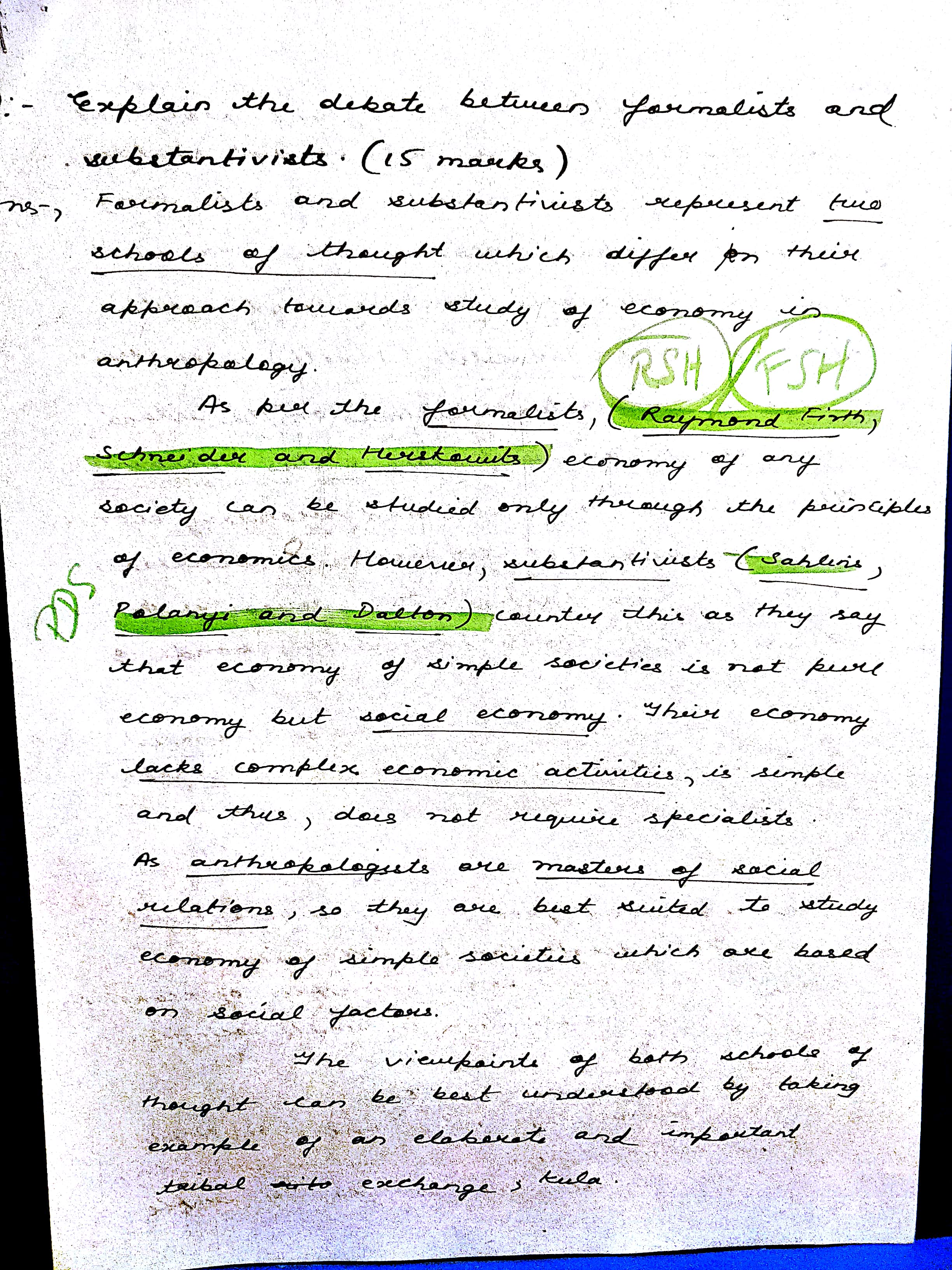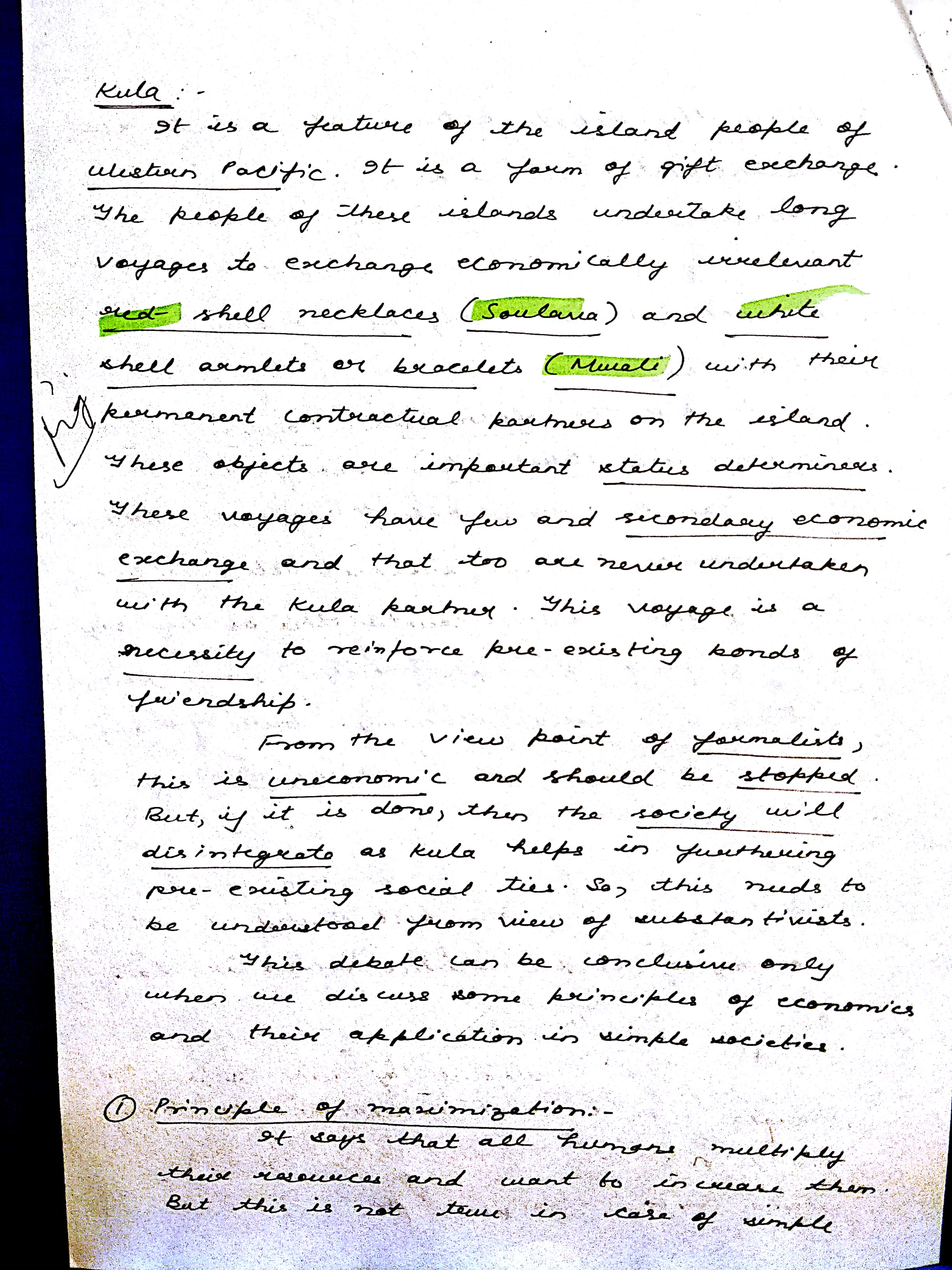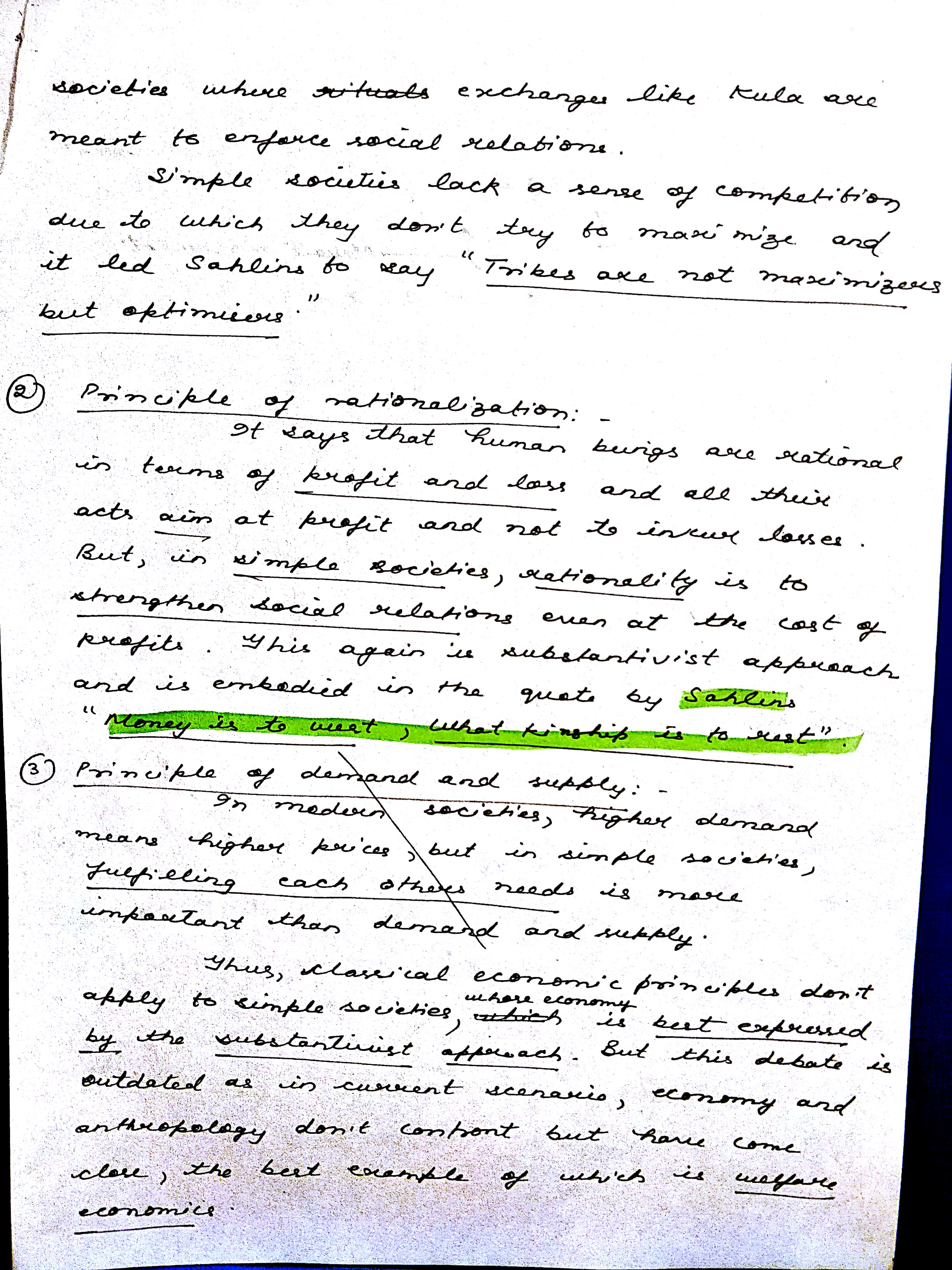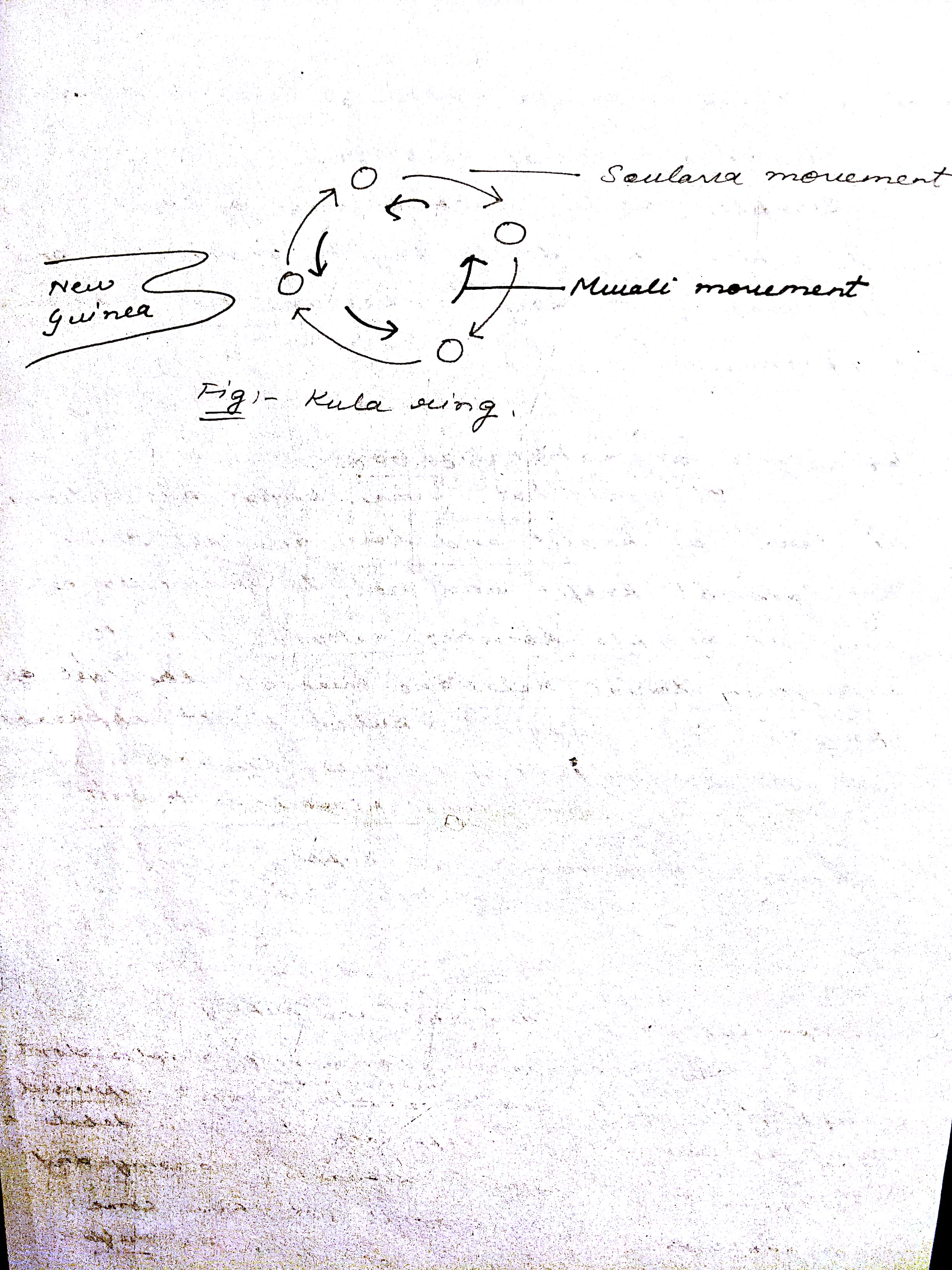formalist versus substantivist debate




George Dalton
- Debate emerged between formalists and substantivists after the work of Karl Polyani,Great transformations 1944, then Trade and Market 1957. Many, mostly American, anthropologist rejected his book and argued that micro economist or formal analysis is required to understand primitive economy.
- During 1960s and 70s Marxism theory also emerged and The debate became formalist substantivist and Marxist debate. Growing interest in Asian and African economies by the economists also pushed the debate.
- Subjects of economic history and economic archaeology were also affected by the debate.
Ignore below
------
"In bourgeois society material production is the dominant locus of symbolic production; in primitive society it is the set of social (kinship) relations...; (all) other spheres of activity are ordered by the operative distinctions of kinship." --Marshall Sahlins
What the native sees as Spirit like land, tree, river, rock and so on. The modern society calls them resources. Tribals associate emotions with them but modern society does not.
Formalists (aka rationalists) consider "primitive" economies as underdeveloped versions of modern capitalist economies, with the premises that all humans are rational and all behavior can be explained rationally. The desire to maximize profit is rational and universal. Depending upon social structural organization--kin-mode, tributary, or rationalist--people follow rules consistent with the "principle of least effort" and caluculated self-interest that transcend culture, though the rules or protocols might be different for each level of development.
Substantivists (aka culturalists or "romantics") view economics as a category of culture as a "sense-making system" that determine human behavior; economics is organized by domestic groups and kinship relations. Economic behavior is a "cultural construction." Our bourgeois economic values are not universal, argues Marshall Sahlins, they are a product of culture. "The primitive order is generalized. A clear differentiation of spheres into social and economic does not there appear." Marshall Sahlin's, Stone Age Economics
Starting in 1966, a formalist school of economic anthropology arose in opposition to the Polanyi group’s substantivist school (see Cook 1966a , 1966b , 1969; LeClair and Schneider 1968; Schneider 1974). The formalist attack was two-pronged: (1) that the models developed by microeconomics were universally applicable and, thus, superior to substantivism for both economic anthropology and comparative economics; and (2) that economic anthropology was no longer primarily concerned with the kinds of economies (primitive, ‘archaic’ state, peasant) for which the substantivists’ tools were developed.
Harold Schneider (1974: 9), who eventually became the dominant figure in the formalist school, stated it this way: ‘The unifying element among … formalists is, in contrast to substantivists, the partial or total acceptance of the cross-cultural applicability of formal [microeconomic] theory’.
Because the formalists focused upon choice, which is always individual, their approach necessarily entailed methodological individualism. The substantivists, on the other hand, focused upon the institutional matrix in which choice occurs (see Cancian 1966: 466).
While economists are concerned with how markets direct the actions of profit-maximising actors, anthropologists have been interested in exploring how actors’ perceptions, social relations and obligations affect their economic decisions.
The Farming Systems Research:
This wider social perspective became necessary when agricultural research stations began to design programmes to increase the productivity of small farmers in Africa, Asia and Latin America. It became clear that an economic evaluation of the technical packages designed by agronomists did not suffice. To avoid failures, researchers had to incorporate in their analysis an evaluation of the ecological, social and political conditions of the region and the goals and preferences of farmers. They also had to consider the information that was available to producers and the risks that they had to assume. This wider approach was known as Farming Systems Research and relied on interdisciplinary teams that included anthropologists and sociologists, though in secondary roles.
One of the key findings that anthropologists and sociologists brought to Farming Systems Research was that, in non-Western societies, resources were often controlled by household or larger kin-based units rather than by individuals. Hence, production and investment decisions had to be made at the household or homestead level. Farming Systems Research adopted their recommendation; the household became the unit of analysis in surveys and assessments of production decisions (Mook 1986; Shaner, Philipp and Schmehl 1982; Turner and Brush 1987).
Rational choice is the heart of the microeconomic model of economic man, who is portrayed as a logical thinker who evaluates options and inputs consistently and coherently, and selects those that maximise his utility. Economic men and women are expected to decide ‘rationally’ how much to produce or buy and sell. If their decisions do not conform to predictions, it raises questions about social or market impediments to an efficient allocation of resources. Some economists even argue that when rational choice is possible, it is unnecessary to protect individuals from the consequences of their choices.
Anthropologists have challenged some of the assumptions of microeconomic models by focusing on how culture and social relations frame the decision process. Mayer and Glave (1999: 345) suggest that Peruvian ‘peasants evaluate profit and losses in terms of a simple cash-out and cash-in flow, ignoring household inputs and family labor’. Appadurai (1991) shows that food provision decisions by Indian women are made as part of other decisions, in a pre-attentive manner except when the problem becomes crucial. Other anthropologists have focused on how power and social conditions define options. Psychologists, instead, have focused on how decisions are made. They have examined how individuals simplify information in order to attend to their preferences and how they evaluate the uncertain outcomes they experience. Some of their findings and propositions have been used by some anthropologists to explore cropping decisions (Gladwin 1975, 1979a, 1979b, 1980) or marketing decisions (Quinn 1978).
This leads to a typology of world-systems based on the mode of accumulation, which incorporates many of the classic categories of earlier anthropology (Chase-Dunn and Hall 1997: 42–4):
1. Kin-based mode dominant
a. Stateless, classless
i. Sedentary foragers, horticulturists, pastoralists
ii. 2. Big-man systems
b. Chiefdoms (classes but not states)
2. Tributary modes dominant (states, cities)
a. Primary state-based world-systems (Mesopotamia, Egypt, Indus Valley, Ganges Valley, China, pre-Columbian Mexico and Peru)
b. Primary empires in which a number of previously autonomous states have been unified by conquest (Agade, Old Kingdom Egypt, Magahda, Chou, Teotihuacan, Huari)
c. Multicentred world-systems composed of empires, states and peripheral regions (Near East, India, China, Mesoamerica, Peru)
d. Commercialising state-based world-systems in which important aspects of commodification have developed but the system is still dominated by the logic of the tributary modes (Afroeurasian worldsystem, including Roman, Indian, and Chinese core regions)
3. Capitalist mode dominant
a. The Europe-centred sub-system since the seventeenth century
b. The global modern world-system